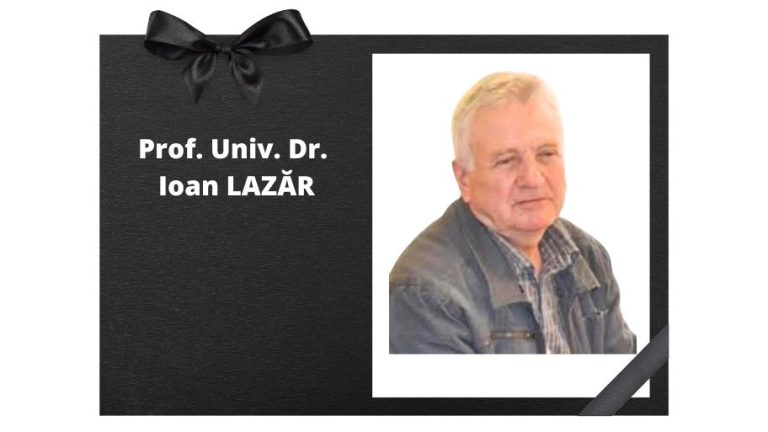*Ioan LAZĂR*
September 18, 1947, com.
Frumoasa (Teleorman) – September 19, 2024, Bucharest
On September 19, 2024 Ioan LAZĂR, university professor, PhD in Cinematography and Media, corresponding member of the Romanian Academy of Scientists, Philosophy, Theology, Psychology Section, passed away.
Author of the first Encyclopaedia of Romanian Film (2022) and contributor to the most appreciated cultural and specialized publications ( Cinema, România literară, Luceafărul, Convorbiri literare, Tribuna, Cronica, Familia, etc.) and daily newspapers Scânteia tineretului, Scânteia, Evenimentul zilei, Zig Zag, Cotidianul, Jurnalul Național, Ziua, Cronica română, Professor Ioan Lazăr has written over 200 articles (reviews, essays, interviews, reviews).
A number of works have aroused a keen interest among readers, some of them sold out quickly, being praised by specialized critics, as evidenced by the number of citations of all works (397), plus the number of citations of names (29), books published by prestigious publishing houses in the country (Meridiane, Cartea Românească, Eminescu, Junimea) – 26 as sole author.
His doctoral thesis L`Analyse stylistique du cinéma was published in French in Lille.
The poetic science of film art” (2017) – with a presentation by prof. univ. François Albera (University of Lausanne) – was crowned with the “Anton Bacalbașa” Prize, awarded by AOȘR and the works “How to make a movie”, “Film Stylistics”, “Cinematic Baroque” have won awards from UCIN: the Cinema Book Award and the Film Criticism Award respectively. UCIN awarded him in 2009 the Academic Prize for Film Culture (ex aequo: Sergiu Nicolaescu and Laurențiu Damian).
For ten years, the Cannes Film Festival website has published a micromonography of the participation of Romanian cinema at the festival, with translations in several languages (French, English, Italian, Russian, Chinese, Japanese, Arabic, Portuguese, Spanish, English, Italian, Russian, Chinese, Arabic, Portuguese, Spanish), signed by Ioan Lazăr.
The author has realized the first monographic studies devoted to the stylistic analysis of the film, cinematic formalism, the participation of Romanian films and filmmakers at Cannes, the landmark films of Romanian cinema.
As part of the Centenary Syntheses, Ioan Lazăr published, in 2019, the work Romanian Film and Theater, entitled “Performing Arts at the Centenary” .
The Presidium of the AOSR expresses its eternal regrets for the loss of Prof. dr.
Ioan LAZĂR!
























